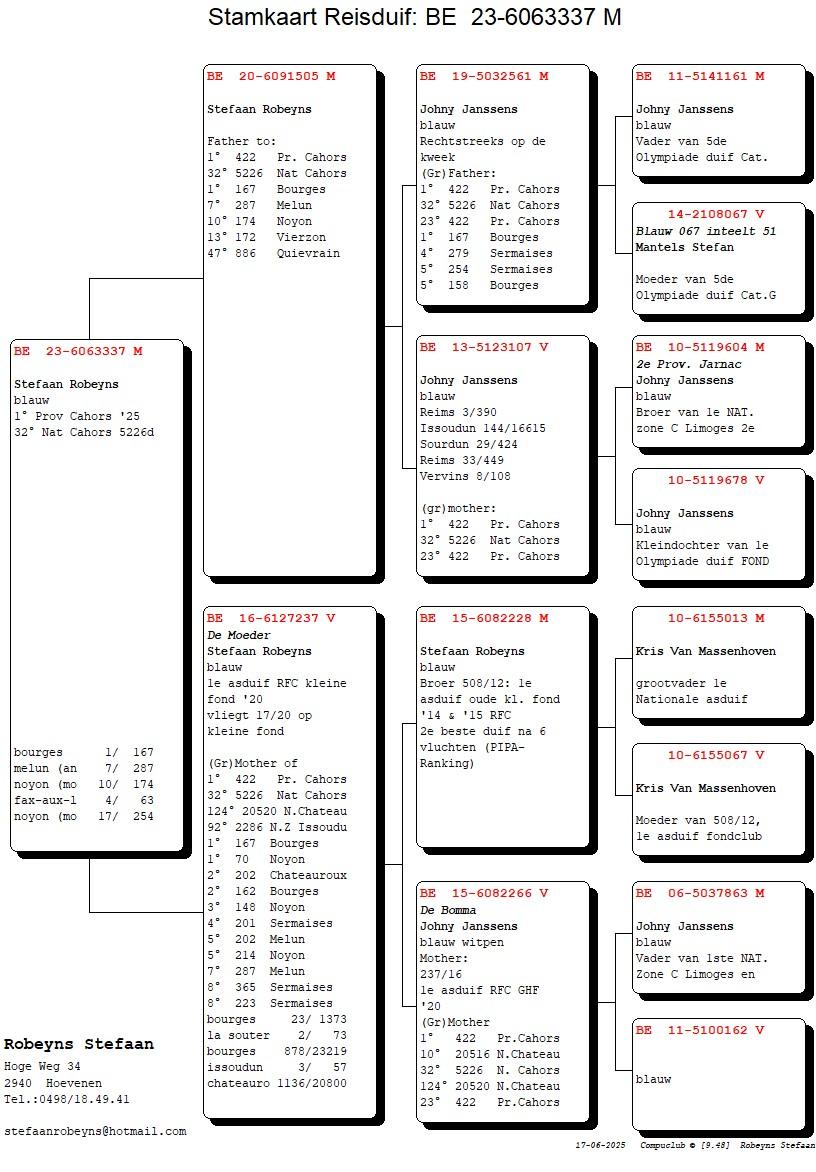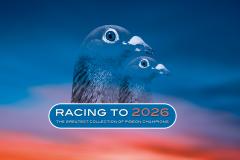Stefaan Robeyns wins 1st Provincial Cahors Antwerp
20 Jun 2025
Stefaan Robeyns from Hoevenen claimed an impressive victory in the national race from Cahors. His old cock BE23-6063337 won the 1st provincial prize against 422 birds in Antwerp and also ranked 32nd nationally against 5,226 old birds.
"A great reward for all the work," says Stefaan. "The pigeons are performing very well this year, and it's encouraging to see that I seem to be heading in the right direction."
From Retie to Hoevenen
Stefaan, 38 years old, started racing pigeons in 2000 in Retie, together with his father. Since 2020, he has lived in Hoevenen, where he has gradually shifted his focus from GHF races to long-distance flights over 700 km. "It’s harder to shine on a provincial or national level in the GHF races here, so I set my sights elsewhere."
About the winner
The winning cock BE23-6063337 is a fine representative of the Johny Janssens strain from Eksel. Yet, he wasn't a favourite for this race. "He hadn't shown much this season and was actually a last-minute replacement because another cock had gone missing after Melun. But he had been showing signs of form in the loft. And since two weeks ago, he had a new hen..."
As a young bird, he placed 17/505 at Melun in the Grensverbond-Hoofd. Last year, he finished 1/167 locally and 679/18,785 nationally on Bourges. The maternal line runs like a red thread through Stefaan’s colony: a proven line of performance birds.
Classic widowhood and simplicity
Stefaan races using the classic widowhood system. "They don’t see their mates until early April. Only the best racers are bred from, and their eggs are placed under foster pairs."
The preparation for Cahors included 2x Quiévrain, 3x Noyon, 1x Melun, Vierzon, and Bourges, followed by a rest period until basketing.
Feeding and care
Feeding is based on Versele-Laga products. "Light feeding early in the week, then Champion and Energy from Tuesday onward. The cocks are fed individually in their boxes. Supplements such as grit, Insect Power, yellow drops, Herbochol, and Belgasol complete the program."
Breeding and selection
Stefaan maintains 12 fixed breeding pairs, with slightly more hens than cocks. Pairs are reshuffled annually to test new combinations. "I try to pair several hens to my best breeders during the breeding season," he explains.
Selection happens in September, after the season. "If they haven’t shown anything by then, they likely never will. My widowhood section is limited to 20 boxes, and I prefer not to fill them all. Performance and pedigree guide selection."
In young birds, he looks for soft feathers, a strong and closed back wing, and overall health. "I’m not too strict early on—especially for the hens, I allow up to 30, which is honestly too many. So I try to keep it below that."
Stefaan believes pigeons should have a full season to prove themselves. "They must fly at the front a few times. If the team is in good shape, making selections becomes easier. If they still don’t show, they never will."
Inspiration and outlook
He draws inspiration from Johny Janssens and Willy Van Herck, both known for their straightforward vision on pigeon sport. "From Johny, I learned not to make excuses—if the pigeons are fit, they must perform. Willy taught me the importance of simplicity: don’t make things harder than they need to be."
In his youth, Stefaan also looked up to fanciers from his region like Jos Van der Veken and Kris Van Massenhoven. "If you're from Retie, you can’t ignore them. They set the tone for years, showing what’s possible with dedication and quality."
He now applies these lessons in his own way, with structure, realism, and an eye for quality.
For the rest of the season, Stefaan hopes to maintain the positive trend. "Agen is always a race I look forward to. And I’m building a team for the national long-distance races."
A victory carved from the right wood—built on vision, simplicity, and top-tier genetics.
Maarten Herbots

























